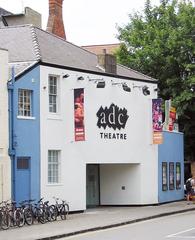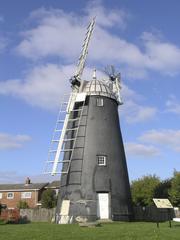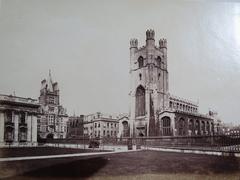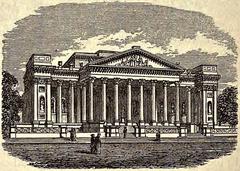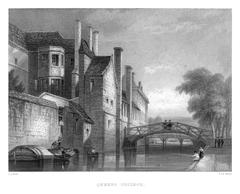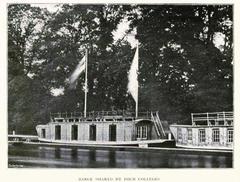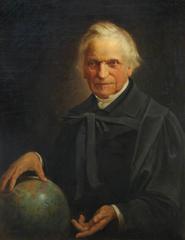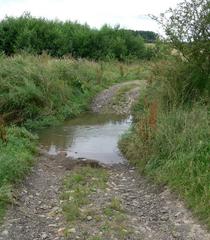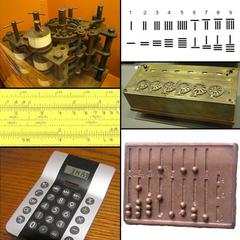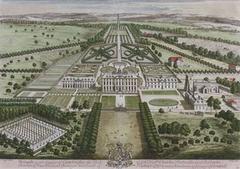Museum of Classical Archaeology, Cambridge: Comprehensive Visitor Guide (2025)
Date: 14/06/2025
Introduction
Situated in the heart of the University of Cambridge, the Museum of Classical Archaeology (MOCA) stands as a remarkable gateway to the ancient Mediterranean world. Established in 1884, MOCA is celebrated for its unrivaled display of over 450 plaster casts of Greek and Roman sculptures, making it one of the world’s most comprehensive collections of its kind. The museum not only supports academic research and teaching but also provides a rich and engaging experience for visitors of all backgrounds. This guide covers MOCA’s history, visiting hours, admission, collection highlights, accessibility, facilities, and tips for making the most of your visit (Museum of Classical Archaeology, Cambridge; WhichMuseum; Wikipedia).
Table of Contents
- Introduction
- Historical Overview
- Visiting Information
- The Collection
- Exhibitions and Public Engagement
- Visitor Experience
- Related Cambridge Historical Sites
- Conclusion
- References
Historical Overview
Origins and Academic Significance
Founded in 1884 to serve the University of Cambridge’s expanding Classics curriculum, MOCA’s initial focus was on acquiring plaster casts as vital teaching aids. Plaster casts allowed the study of major ancient sculptures without the need to travel across Europe, democratizing access to classical art for students and scholars (Museum History, Faculty of Classics).
The practice of collecting plaster casts was widespread in the 19th century, and MOCA’s collection soon included significant pieces like the Farnese Hercules, many sourced from private collections and the Fitzwilliam Museum. Over time, MOCA’s holdings expanded to include original artifacts, pottery, coins, and an extensive archive, cementing its status as a leading center for the study of classical antiquity.
Development and Relocation
Originally based in Peterhouse College’s “The Ark,” MOCA moved in 1983 to its current purpose-built gallery within the Faculty of Classics on Sidgwick Avenue. This modern facility provided better exhibition space and direct integration with the university’s academic life (Museum History, Faculty of Classics).
Visiting Information
Location and Access
MOCA is located at the Faculty of Classics, Sidgwick Avenue, Cambridge, CB3 9DA. Access is from the Sidgwick Site, with clear signage leading to the museum. The site is well connected by public transport and is a short walk or cycle ride from the city center. Limited on-street parking is available; however, public transport or cycling is recommended due to parking restrictions (museum.classics.cam.ac.uk).
Opening Hours
- Tuesday to Friday: 10:00 AM – 5:00 PM
- Saturday: 2:00 PM – 5:00 PM (during University of Cambridge term time only; for 2025, Saturday openings run until June 14)
- Sunday, Monday, and Bank Holidays: Closed
Check the official museum website for the latest updates, especially during university holidays or special events.
Admission and Tickets
Admission is free for all visitors. No advance tickets are required. For groups of 10 or more, advance booking is advised to ensure a smooth visit (museum.classics.cam.ac.uk).
Accessibility
MOCA offers step-free access throughout the gallery and accessible restroom facilities. Large print labels and seating are available. Assistance dogs are welcome, and the staff are happy to help with specific access needs. For detailed accessibility information, consult the University’s disability access guide or contact the museum directly.
Facilities
While there is no café on-site, the surrounding area and Sidgwick Site offer several options for refreshments. The museum provides accessible restrooms and a cloakroom area for small bags and coats.
The Collection
Plaster Casts: Purpose and Pedagogy
MOCA’s core collection comprises over 450 full-size plaster casts of Greek and Roman sculptures, spanning from the Archaic period to Late Antiquity (Museum of Classical Archaeology, Cambridge). Plaster casts served as essential educational tools, enabling the detailed study of masterpieces otherwise scattered across the globe. Today, MOCA’s collection is one of the few remaining, offering unparalleled opportunities for comparison and interpretation (WhichMuseum).
Collection Highlights
- Peplos Kore: A striking painted cast demonstrates the original polychromy of Greek statuary, challenging the myth of “white marble” antiquity. Displayed alongside an unpainted cast, this exhibit is central to MOCA’s educational mission (Wikipedia).
- Laocoön and His Sons: The dramatic cast of this Hellenistic masterpiece allows close examination of composition and emotional expression.
- Farnese Hercules: A monumental Roman copy, impressive in scale and detail.
- Barberini Faun: A sensual and naturalistic Hellenistic work, represented by a high-quality cast.
- Charioteer of Delphi: A rare example of a complete ancient bronze, allowing study of Classical period techniques (Museum of Classical Archaeology).
Research Collections: Sherds and Squeezes
Beyond the casts, MOCA holds over 10,000 pottery sherds and 5,000 epigraphic squeezes (paper or plaster impressions of inscriptions), plus a range of archival materials. These are available for academic research by appointment (museum.classics.cam.ac.uk).
Exhibitions and Public Engagement
Special and Temporary Exhibitions
MOCA regularly hosts temporary exhibitions exploring classical themes, contemporary responses, and current research. Recent shows have addressed topics like ancient polychromy and the representation of identity and migration in antiquity. Online exhibitions and interactive resources further broaden public engagement (Museum of Classical Archaeology, WhichMuseum).
Educational Programs and Group Visits
The museum welcomes school groups, university classes, and special interest societies. Advance booking is required for groups of 10 or more. Tailored guided tours, workshops, and educational resources are available, supporting learners of all ages (museum.classics.cam.ac.uk).
To arrange a visit, email [email protected] or call +44 (0)1223 330402.
Visitor Experience
Essential Tips
- Photography: Non-commercial photography is permitted. Content is available under a CC BY-NC-ND 4.0 licence.
- Quiet Times: Weekday mornings are typically less busy.
- Duration: Allow 1–2 hours to fully experience the gallery.
- Events: Check the museum’s website for upcoming talks, workshops, and exhibitions.
- Nearby Attractions: The Fitzwilliam Museum, Kettle’s Yard, and the Museum of Archaeology and Anthropology are all within walking distance (cam.ac.uk visitor guide).
Frequently Asked Questions (FAQ)
Q: What are the Museum of Classical Archaeology opening hours?
A: Tuesday–Friday 10:00–17:00; Saturday (term time only) 14:00–17:00; closed on Sundays, Mondays, and Bank Holidays.
Q: Is admission free?
A: Yes, entry is free for all visitors.
Q: Are guided tours available?
A: Yes, by prior arrangement. Contact the museum for details.
Q: Is the museum wheelchair accessible?
A: Yes, with step-free access and accessible facilities.
Q: Can I take photographs?
A: Yes, non-commercial photography is allowed.
Q: Are refreshments available?
A: No café inside the museum, but options are nearby.
Related Cambridge Historical Sites
Make the most of your visit by exploring other cultural landmarks nearby, including:
- The Fitzwilliam Museum
- Kettle’s Yard
- Museum of Archaeology and Anthropology
- Cambridge University Botanic Garden
More information on Cambridge museums can be found at Free museums in Cambridge.
Conclusion
The Museum of Classical Archaeology is a distinctive destination for anyone passionate about ancient art and history. Its world-class collection of plaster casts, innovative exhibitions, and strong academic connections make it a vital resource for researchers, students, and visitors alike. Coupled with its accessible, welcoming environment and central location, MOCA stands out as a must-see site within Cambridge’s vibrant museum landscape. Whether you are a seasoned scholar or a curious traveler, MOCA offers an enriching journey through the art and legacy of the ancient Mediterranean world.
For more details and to plan your visit, explore the official museum website.
References & Further Reading
- Museum of Classical Archaeology, Cambridge (Faculty of Classics, University of Cambridge)
- Museum of Classical Archaeology, Museums Cambridge
- Museum of Classical Archaeology, WhichMuseum
- Museum of Classical Archaeology, Wikipedia
- Museum of Classical Archaeology, Collections and Visiting
- University of Cambridge Disability Access Guide
- Cambridge Visitor Guide (PDF)
Enhance your visit by downloading the Audiala app for audio guides and event updates. Stay informed by following MOCA and the University of Cambridge on social media.
